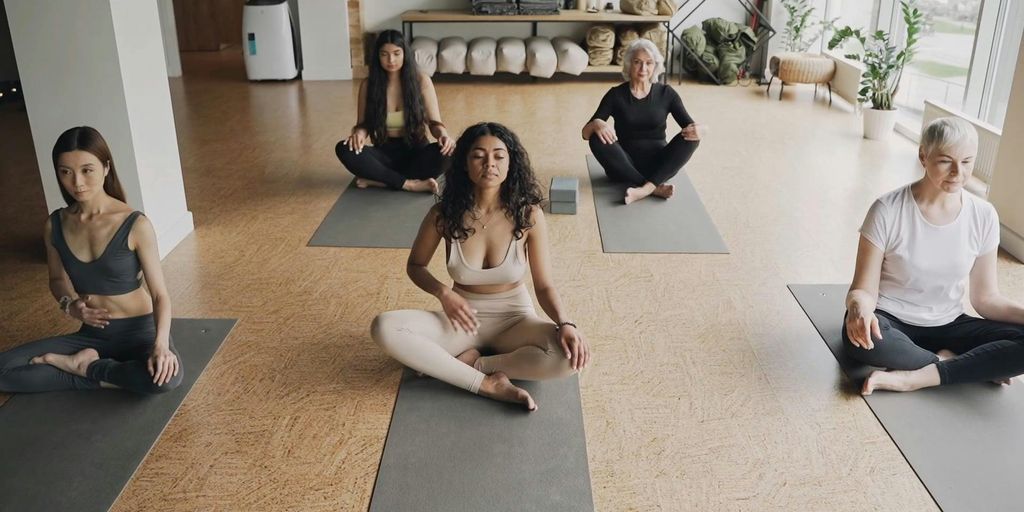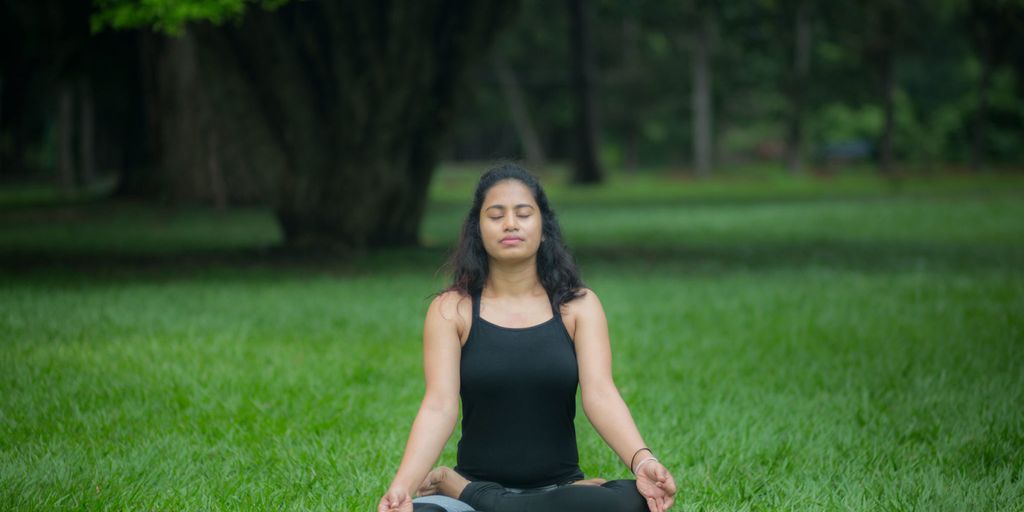
Finding the Best Yoga Mat for Your Practice: A Comprehensive Guide
Choosing the right yoga mat is essential for enhancing your practice, providing comfort, and ensuring safety. With a plethora of options available in the market, it can be overwhelming to make the right choice. This comprehensive guide aims to simplify the process by breaking down the different types of yoga mats, key features to look for, and how to select the best one for your specific needs.
Key Takeaways
- Understanding the different types of yoga mats is crucial for making an informed decision.
- Key features such as grip, portability, and durability should be prioritized based on your practice.
- Eco-friendly options are available for those who are environmentally conscious.
- Top brands like Liforme, Manduka, and Jade Yoga offer high-quality mats with unique features.
- Proper care and maintenance can extend the lifespan of your yoga mat, ensuring it remains in good condition.
Understanding Different Types of Yoga Mats
Material Varieties
Yoga mats come in a variety of materials, each offering unique benefits. PVC mats are durable and provide excellent grip, while natural rubber mats are eco-friendly and offer good cushioning. TPE mats are a blend of both, providing a balance between comfort and sustainability.
Thickness and Texture
The thickness and texture of a yoga mat can significantly impact your practice. Thicker mats offer more cushioning, which is ideal for restorative yoga, while thinner mats provide better stability for balance poses. Textured mats can enhance grip, preventing slipping during intense sessions.
Eco-Friendly Options
For those who prioritize sustainability, eco-friendly yoga mats are a great choice. These mats are typically made from natural materials like rubber, jute, or cork. They are biodegradable and free from harmful chemicals, making them a healthier option for both you and the planet.
Choosing the right yoga mat involves considering various factors such as material, thickness, and eco-friendliness to ensure it meets your specific needs and preferences.
Key Features to Look for in a Yoga Mat
When selecting a yoga mat, there are several key features to consider to ensure it meets your needs and enhances your practice. Grip and traction are crucial for maintaining stability in various poses, especially in styles like hot yoga where sweat can make surfaces slippery. Look for mats with a textured surface or made from materials known for their non-slip properties.
Portability and weight are important if you plan to carry your mat to different locations. Lightweight mats are easier to transport, but they should still provide adequate cushioning and support. Consider the mat's thickness and material when evaluating its portability.
Durability and longevity are essential for a mat that will withstand regular use. High-quality mats may come with a higher price tag, but they often offer better wear resistance and longer life spans. Wirecutter's top picks for yoga mats guide beginners and hot yoga practitioners in choosing mats based on practice style, material, texture, durability, and longevity. Includes top picks like Gaiam Essentials, Manduka ProLite, and Liforme.
Investing in a good yoga mat can significantly improve your practice experience, providing the right balance of comfort, support, and stability.
How to Choose the Right Yoga Mat for Your Practice
Choosing the right yoga mat can significantly enhance your practice, providing the support and comfort you need. Here are some key considerations to help you make the best choice.
Matching Mat to Yoga Style
Different yoga styles require different types of mats. For instance, if you practice hot yoga, you'll need a mat with excellent grip and moisture absorption. On the other hand, a thicker mat might be more suitable for restorative yoga, offering extra cushioning for longer holds.
Considering Your Body's Needs
Your body's needs play a crucial role in selecting a yoga mat. Some people require or prefer extra cushioning, and there are a few yoga-specific thicker mats out which provide joint support but not too “squishy.” If you have sensitive joints, a mat with more padding can make a significant difference.
Budget and Value Considerations
Yoga mats come in a wide range of prices. It's important to find a balance between cost and quality. While high-end mats offer durability and advanced features, there are also budget-friendly options that provide good value. Consider how often you'll use the mat and what features are most important to you.
Investing in a quality yoga mat can enhance your practice and provide long-term benefits. Choose wisely to ensure comfort and support during your sessions.
Top Brands and Their Best Yoga Mats
Liforme
Liforme is renowned for its eco-friendly and high-performance yoga mats. Their mats are designed with alignment markers to help practitioners maintain proper posture. The mats are made from biodegradable materials, ensuring minimal environmental impact.
Manduka
Manduka offers a range of yoga mats that cater to different needs, from beginners to advanced practitioners. Their PRO series is particularly popular for its durability and comfort. Manduka mats are known for their closed-cell surface, which prevents moisture and bacteria from seeping into the mat.
Jade Yoga
Jade Yoga mats are celebrated for their exceptional grip and eco-friendly materials. These mats are made from natural rubber, providing a non-slip surface even during intense practices. Jade Yoga also plants a tree for every mat sold, contributing to environmental sustainability.
Choosing a yoga mat from a reputable brand can significantly enhance your practice, providing the right balance of comfort, support, and durability.
Caring for Your Yoga Mat
Cleaning and Maintenance Tips
Regular cleaning is essential to maintain the hygiene and longevity of your yoga mat. Use a gentle cleanser and a soft cloth to wipe down your mat after each practice. Avoid harsh chemicals that can degrade the material. For a deeper clean, you can occasionally soak your mat in a mixture of water and mild soap, then rinse thoroughly and air dry.
Storage Solutions
Proper storage can significantly extend the life of your yoga mat. Always roll your mat with the top side facing out to prevent curling edges. Store it in a cool, dry place away from direct sunlight to avoid material breakdown. Consider using a yoga mat bag or strap for easy transport and protection.
When to Replace Your Mat
Even with the best care, yoga mats don't last forever. Signs that it's time to replace your mat include visible wear and tear, loss of grip, and unpleasant odors that persist despite cleaning. Replacing your mat ensures you continue to have a safe and effective practice.
Taking good care of your yoga mat not only enhances your practice but also extends the life of your mat, making it a worthwhile investment.
User Reviews and Testimonials
Real User Experiences
Real user experiences provide invaluable insights into the performance and comfort of various yoga mats. Many users highlight the importance of grip and traction, especially during intense sessions. Some common praises include the durability of the mats and their ease of cleaning. However, a few users have noted that certain mats can be a bit heavy to carry around.
Expert Opinions
Experts often weigh in on the best yoga mats by considering factors like material quality, thickness, and eco-friendliness. They frequently recommend mats that offer a balance between comfort and support. According to yoga instructors, a good mat can significantly enhance your practice by providing stability and reducing the risk of injury.
Comparing Popular Models
When comparing popular models, it's essential to look at various features side by side. Here's a quick comparison of some top-rated yoga mats:
| Brand | Model | Grip | Weight | Durability |
|---|---|---|---|---|
| Liforme | Travel Mat | High | Light | High |
| Manduka | PRO Mat | High | Heavy | Very High |
| Jade Yoga | Harmony Mat | Medium | Medium | High |
User reviews and expert opinions together provide a comprehensive view, helping you make an informed decision when choosing the best yoga mat for your practice.
Where to Buy the Best Yoga Mat
Online Retailers
Online retailers offer a vast selection of yoga mats, making it easy to compare different brands and models. We found the best yoga mats of 2024 after testing 26 options in the Verywell testing lab. Popular online stores include Amazon, YogaOutlet, and the official websites of top brands like Lululemon and Manduka. Shopping online often provides access to customer reviews, detailed product descriptions, and sometimes exclusive online discounts.
Local Yoga Studios
Purchasing a yoga mat from a local yoga studio can be a great way to support small businesses and get personalized recommendations. Many studios carry a curated selection of mats that they trust and use in their own classes. Additionally, you might have the opportunity to try out a mat before buying it, ensuring it meets your needs.
Specialty Fitness Stores
Specialty fitness stores often have knowledgeable staff who can help you find the perfect yoga mat for your practice. These stores typically offer a range of high-quality mats and other yoga accessories. Shopping in person allows you to feel the texture and thickness of the mat, which can be crucial for making the right choice.
When choosing where to buy your yoga mat, consider the benefits of each option. Online retailers offer convenience and variety, local yoga studios provide personalized service, and specialty fitness stores offer expert advice and the chance to physically test the product.
Looking for the best yoga mat to elevate your practice? Look no further! At Yune Yoga, we offer a wide range of high-quality mats that cater to all your needs. From eco-friendly options to foldable travel mats, we have something for everyone. Visit our website today and find the perfect mat for your yoga journey.
Conclusion
Choosing the right yoga mat is crucial for enhancing your practice and ensuring comfort and stability. By considering factors such as material, thickness, texture, and price, you can find a mat that meets your specific needs and preferences. Remember that the best yoga mat for you is one that supports your practice, aligns with your values, and fits within your budget. Take the time to research and test different options, and you'll be well on your way to a more fulfilling and enjoyable yoga experience.
Frequently Asked Questions
What is the best material for a yoga mat?
The best material for a yoga mat depends on your needs. Common materials include PVC, TPE, natural rubber, and cork. Each offers different levels of grip, cushioning, and eco-friendliness.
How thick should a yoga mat be?
The thickness of a yoga mat can vary. Thicker mats (around 6mm) provide more cushioning, which is ideal for restorative or gentle yoga, while thinner mats (3-4mm) offer better stability for balance poses and are preferred for more dynamic practices.
Are eco-friendly yoga mats worth it?
Eco-friendly yoga mats are worth considering if you are environmentally conscious. They are made from sustainable materials like natural rubber, jute, or cork, and are free from harmful chemicals. They may cost more but are better for the planet.
How do I clean my yoga mat?
Cleaning your yoga mat regularly is important for hygiene. Most mats can be wiped down with a solution of water and mild detergent. Some mats are also machine washable, but always check the manufacturer's instructions.
What should I look for in a yoga mat for hot yoga?
For hot yoga, look for a mat with excellent grip and traction, even when wet. Mats made from natural rubber or those with a textured surface are often good choices. Additionally, consider a mat towel for extra sweat absorption.
How often should I replace my yoga mat?
The frequency of replacing your yoga mat depends on usage and material quality. On average, a mat should be replaced every 1-2 years if used regularly. Signs that it's time to replace your mat include wear and tear, loss of grip, or an unpleasant odor that doesn't go away after cleaning.


